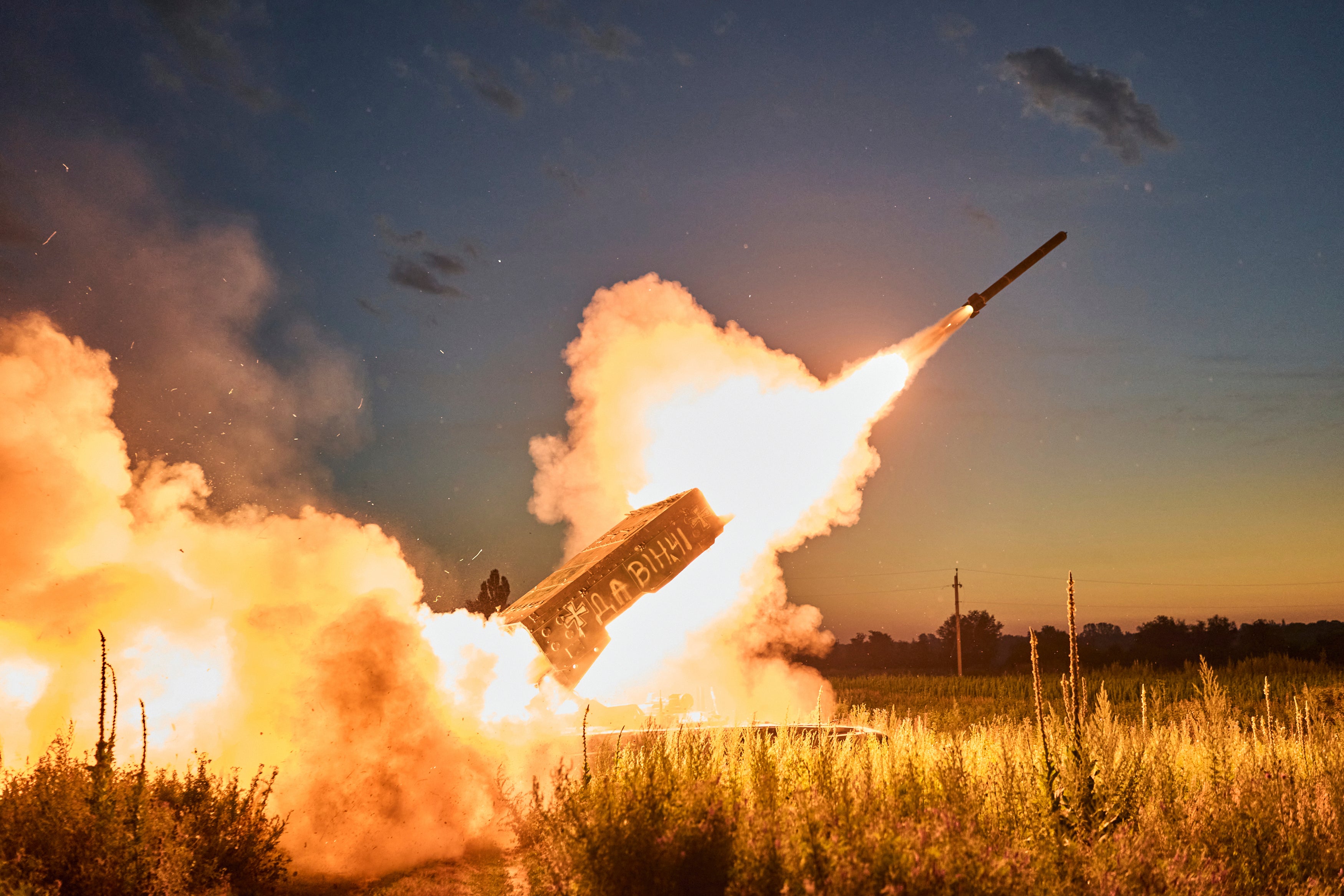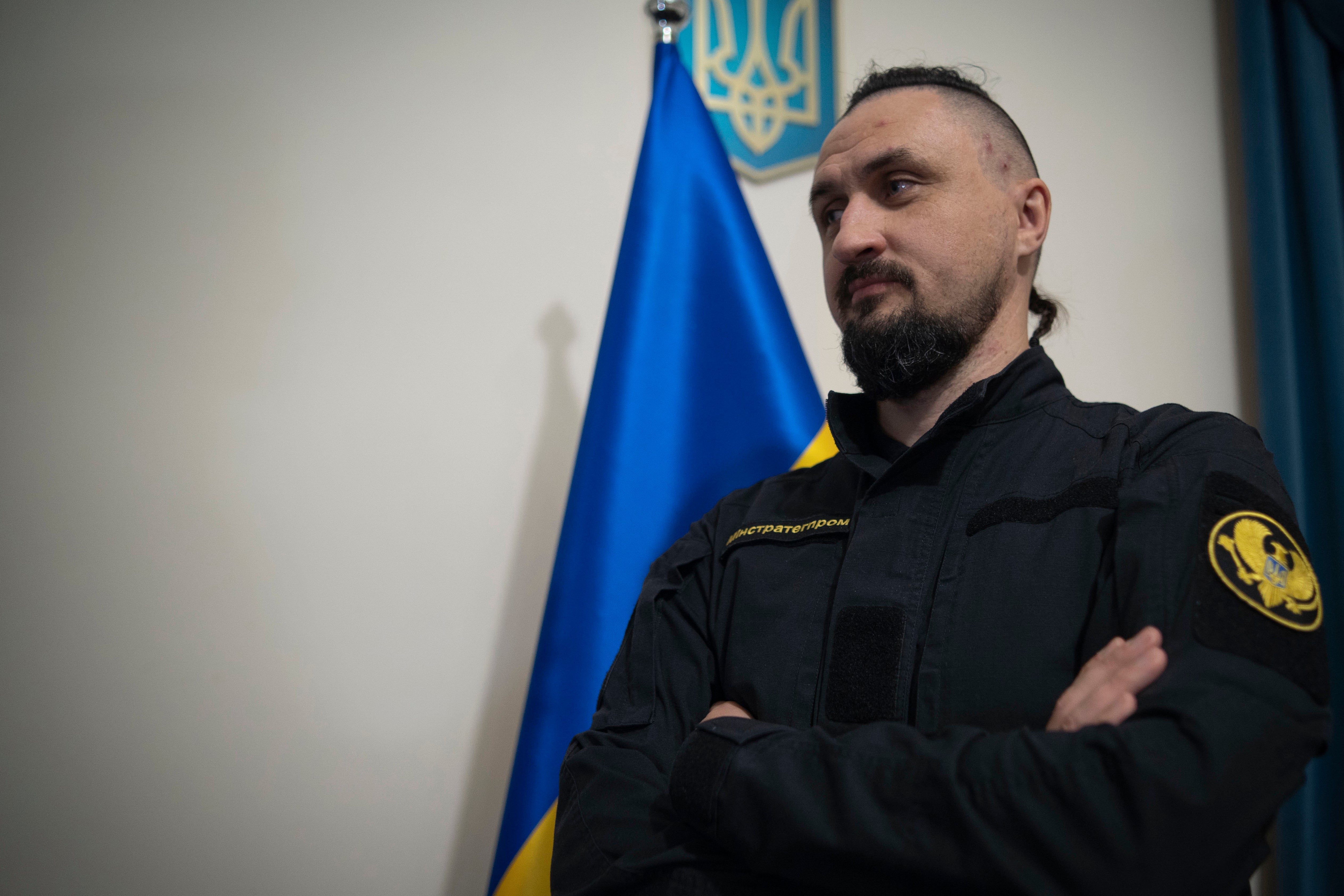Ukraine has a game-changing plan to fight off Russia, its arms industry chief says – but it needs the West’s help
The country’s minister of strategic industries, Oleksander Kamyshin, says the nation stands ready to ramp up production of drones and other weapons by orders of magnitude but it will need more funding from Western allies. Bel Trew reports from Kyiv


Your support helps us to tell the story
This election is still a dead heat, according to most polls. In a fight with such wafer-thin margins, we need reporters on the ground talking to the people Trump and Harris are courting. Your support allows us to keep sending journalists to the story.
The Independent is trusted by 27 million Americans from across the entire political spectrum every month. Unlike many other quality news outlets, we choose not to lock you out of our reporting and analysis with paywalls. But quality journalism must still be paid for.
Help us keep bring these critical stories to light. Your support makes all the difference.
Ukraine’s pioneering drone technology and its growing domestic weapons industry are a “game-changer” that could help win the war, a Ukrainian minister has said – urging Western allies to do all they can to support Kyiv as its forces struggle to hold the front line at the beginning of the third year of Russia’s invasion.
Speaking to The Independent, Ukraine’s minister of strategic industries, Oleksander Kamyshin, warned that as a brutal artillery war has ground on, Ukraine requires an amount of ammunition that “no single country can deliver” – even the United States. And so, as the war enters its third year, they are developing more cost-effective means to hold the front while simultaneously maximising domestic production. Ukraine’s domestic defence output tripled in 2023 and there are plans to increase it sixfold this year.
Kamyshin said Ukraine was positioning itself as a global pioneer in drone technology, as unmanned aerial vehicles (UAVs) have become the surprise cornerstone in the very modern battlefields of Ukraine. Drones are so important that Ukrainian president Volodymyr Zelensky announced the creation of a separate branch of the military, called the Unmanned Systems Force, dedicated to UAVs and their technology.
“Domestic production is crucial,” says Kamyshin, who was appointed to his role last March after running the state-owned Ukrainian Railways.
“We can produce over one million first-person-view (FPV) drones this year plus thousands of drones that can fly over 1,000km, reaching as far as refineries in Russia. This is a game-changer,” he says. “Our defence tech is really cool, and together with the newly formed force of unmanned drone systems, it will deliver results.”
At the moment, Ukraine is producing FPV, long-range and sea drones, all of which have had surprising results in clawing back control of the Black Sea and destroying Russian ships and other hardware. Kyiv claims its drones have damaged or destroyed more than $5.5bn (£4.3bn) of Russian equipment, including more than 1,000 tanks, 1,600 armoured vehicles and nearly 900 artillery guns. This year, they will launch land drones that move across the ground, as part of an effort to be “drones first” on the battlefield.

Vadym Sukharevskyi, deputy commander of the military, said this week that Ukraine is developing the “future textbooks for standard operating procedures”. The country is also exploring locally fashioned hybrid models. As Western allies have struggled to locate and produce enough hardware, Ukraine is now building its own hybrid air defence systems. Nicknamed FrankenSAMs, they cobble together Soviet launchers like Buk air defence vehicles with American-made (and provided) surface-to-air missiles which – according to Kyiv – have been effective on the battlefield.
Kamyshin says Ukraine has some of the fastest capabilities for developing all these new technologies as it is actively testing prototypes in real time on the battlefield: information that can be shared with partners, particularly as the world follows Ukraine in pivoting towards uncrewed systems in conflict. This month, the UK government said the Ukraine war had shown the true importance of UAVs and announced it was investing £4.5bn in its own drones over the next decade.
This paradigm shift could change the face of warfare, particularly as Russia’s invasion has seen the cost of the most ubiquitous artillery shell – the 155mm – quadruple from around $2,000 to more than $8,000. Drones, Kamyshin says, are considerably cheaper: a single Ukrainian-made FPV drone is just $1,650. But the problem for Ukraine right now is financing internal development and production.
“Our defence industry capabilities are several times larger than the funding available to support it, so right now we have to cherry-pick,” Kamyshin says. “We are capable of making more but we don’t have the funding for it.
“We prioritise first ammunition, then drones and then air defence. We try to cover this with the funding available. The rest suffers.
Our defence industry capabilities are several times larger than the funding available to support it, so right now we have to cherry-pick
“But it could be something that the US and other partners could cover: we are asking the UK and the US for funding. We are already capable.”
Ukraine has been outnumbered and outgunned ever since Russian president Vladimir Putin launched his full-scale invasion two years ago, an assault which has likely killed tens of thousands of people and Ukraine warns is a direct challenge to the security of Europe and the West. But despite the discrepancy in firepower, the Ukrainian military made surprise gains in the north, northeast and south of the country, seizing back occupied territory and holding a 1,200km-long front line. It has been largely reliant on its Western allies for ammunition and weapons, support that has fallen short in recent months due to political deadlock in the US Congress over military assistance, combined with the chronic lack of production capacity in Europe and general global deficits.
Rustem Umerov, Ukraine’s defence minister, said at the weekend that half of the promised military aid from its Western allies is being delivered late, “costing lives and territory”. Ukraine has only received a third of the million artillery shells the European Union had promised last year to deliver by March.
Russia, meanwhile, has nearly half a million personnel fighting in Ukraine right now and has ramped up its domestic production, moving into a “war economy”, one Ukrainian diplomat told The Independent. Last year, The Independent understands, Moscow produced two million 122- and 152-calibre shells while also receiving weapons from North Korea and Iran.
President Zelensky admitted recently that every day, Russian forces fire on average seven times more munitions at Ukrainian forces than they are able to fire back. There are reports in recent months that Ukraine has had to ration its forces to firing just 2,000 artillery rounds a day.
On the front lines, it has translated to concerns of ceding territory. This week, the Ukrainian military announced Russia had advanced once again around the eastern city of Avdiivka, from which they had had to withdraw recently after a brutal four-month battle.

Kamyshin admits that no matter how much Ukraine produces domestically, it will always be reliant on external supply because of the ferocity of the battlefield. But new technology – like FPV drones and long-range drones hitting deep into Russian territory – is helping push the needle and could eventually mean they reach air superiority “for the first time”.
He believes Ukraine is facing becoming a global pioneer in unmanned systems. “We have technology we can share: our naval and flying drones are already better and cheaper than any other country. Later, those products could be available for our partners to strengthen the joint defence capabilities,” he adds.
Speaking to The Independent at a recent conference in Kyiv, former prime minister Boris Johnson said: “One of the things we should consider is whether it’s time for Nato to give a percentage of our allocated budget for Ukraine’s defence.
“I believe now is the time,” he added, saying that the UK and other Western allies “need to do more and faster”.
British parliamentarians last week visited drone factories in Ukraine. There, SNP MP Stewart McDonald noted that “Ukraine has more experience of drone warfare than any other country”.
“It’s in our own interest to support that, to learn from it, to tap into it as much as possible,” he added.
Kamyshin says the best help is financing. “It is in the interest of our partners like the US and the UK to fund our industry – and let us produce more to win the war.”
Subscribe to Independent Premium to bookmark this article
Want to bookmark your favourite articles and stories to read or reference later? Start your Independent Premium subscription today.
Join our commenting forum
Join thought-provoking conversations, follow other Independent readers and see their replies
Comments